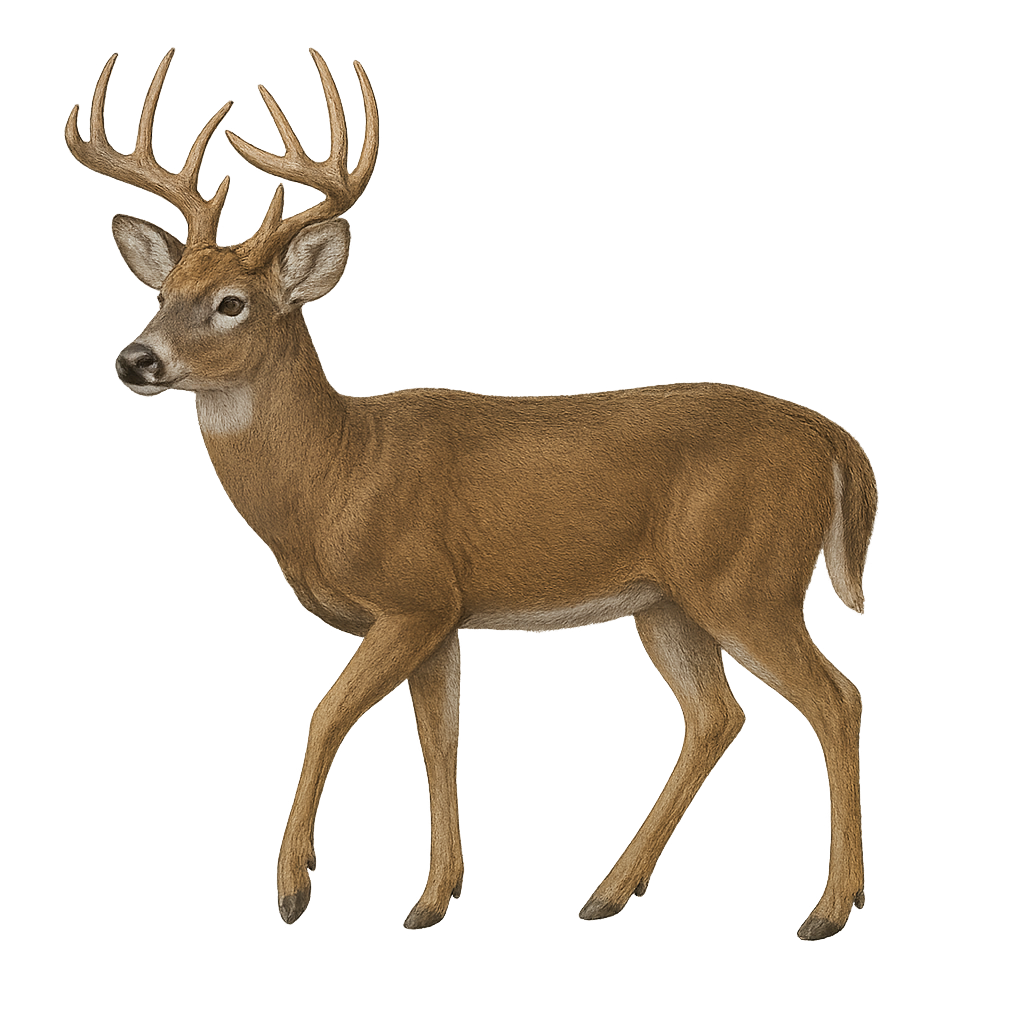Your wildlife photography guide.
Explore the white-tailed deer in detail, study its behavior, prepare your shots.
Where to observe and photograph the white-tailed deer in the wild
Learn where and when to spot the white-tailed deer in the wild, how to identify the species based on distinctive features, and what natural environments it inhabits. The WildlifePhotographer app offers tailored photography tips that reflect the white-tailed deer’s behavior, helping you capture better wildlife images. Explore the full species profile for key information including description, habitat, active periods, and approach techniques.
White-tailed deer
Scientific name: Odocoileus virginianus

IUCN Status: Least Concern
Family: CERVIDAE
Group: Mammals
Sensitivity to human approach: Suspicious
Minimum approach distance: 30 m
Rut period: October to November
Gestation: 200-210 jours
Births: May to June
Habitat:
Forests, grasslands, wetlands
Activity period :
Active at dawn and dusk, ideal moments for observation.
Identification and description:
The white-tailed deer, or Odocoileus virginianus, is a widespread cervid in North and South America. It is easily recognizable by its white tail, which it raises when alarmed. Males have antlers that they shed annually. The coat varies from reddish-brown in summer to gray-brown in winter, providing excellent camouflage. This deer is highly adaptable, living in various habitats from dense forests to open grasslands. It is primarily herbivorous, feeding on leaves, fruits, and young shoots. The white-tailed deer plays a crucial role in its ecosystem, influencing vegetation and serving as prey for many predators.
Recommended lens:
400 mm – adjust based on distance, desired framing (portrait or habitat), and approach conditions.
Photography tips:
To photograph the white-tailed deer, it's essential to remain discreet and patient. Use a telephoto lens of at least 400mm to capture detailed images without disturbing the animal. Focus on twilight hours when the deer is most active. Look for areas where natural light highlights the deer's coat. Be attentive to subtle movements and be ready to adjust your focus quickly. Finally, always respect the safety distance to avoid stressing the animal and to capture authentic shots of its natural behavior.
The WildlifePhotographer App is coming soon!
Be the first to explore the best nature spots, track rutting seasons, log your observations, and observe more wildlife.
Already 1 431 wildlife lovers subscribed worldwide

